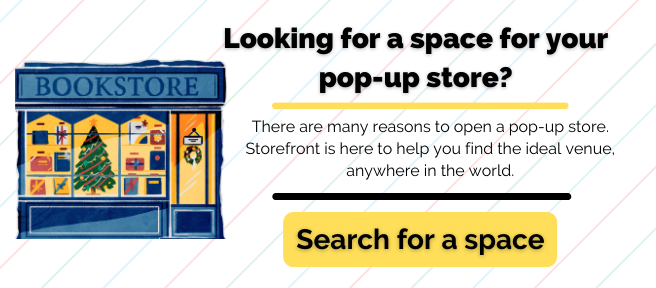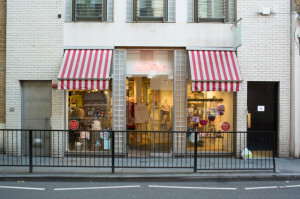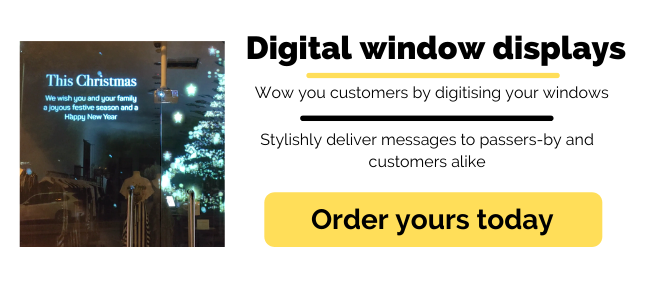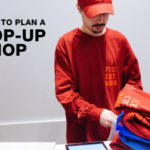If you are considering running a pop-up shop, one of the first question you’ve probably asked yourself is ‘how much does a pop-up shop cost?’.
Overall, short-term retail only requires a fraction of the financial investment of a traditional brick-and-mortar store. A more specific answer depends on a variety of factors, starting with the size, length and type of pop-up shop you are planning.
In order to help you understand how much your pop-up shop could cost, and therefore how much you should be prepared to budget for, we have produced the following list of factors to consider. Where possible, we have provided an indication of the cost or at least an estimation of how much of your overall budget a particular cost is likely to require.
For help understanding all the factors involved in a successful pop-up check out this post How to set up a pop-up shop (checklist).
How to Set a up Pop-Up Shop Budget
Creating a budget for pop-up retail may feel intimidating at first but it’s far easier when you break it into more manageable sections.
1. Determine the Type of Pop-Up Event You Want to Host
One of the primary costs you’ll have to shoulder is rental of your brick and mortar venue. Before you can choose a retail space that suits your business, you’ll need to figure out what type of pop-up event you want to create.
Your choices here depend heavily on what you’re trying to achieve and the type of person you are trying to reach. You’ll get a different answer for a product launch or brand awareness event than you will for a more traditional retail approach (ie transactions and sales).
Ask yourself these important questions when fleshing out your plan:
- How much square footage does my business need for what we’re trying to achieve?
- What time of year will I host my pop-up event (can I host it indoors/outdoors)?
- Which city or neighborhood is ideal for my pop-up store?
- Do I want to hit multiple locations with a traveling pop-up store?
- How long do I want to host my pop-up shop for?
Depending on your answers, you’ll be able to make a more informed decision about the scope and scale of your pop-up retail strategy.
Some of the most common types of pop-up shops for you to consider include:
- Store-within-a-store, or pop-ins – either a few shelves in an existing store or a more collaborative marketplace approach with other businesses
- Kiosks or booth space at an event – tied in with the nature and audience of the event
- Galleries or event spaces – more for corporate gatherings, short-term events or product launches
- Malls – if you want high footfall, malls and shopping centres are a good option. You’ll be in good company.
- Vacant storefronts – a whole store for yourself
- Flexible retail spaces – many traditional real estate landlords are renting their shops out as flexible retail spaces
- Traveling pop-up shops – such as a food truck or container
These are all spaces and use cases that are readily available across the world on the Storefront platform, have a search! Pricing is displayed on each listing.
Your pop-up store location will account for about 30% of your overall budget. And because it’s one of your largest expenses, you’ll likely need to make accommodations to prevent exceeding your allotted amount.
2. Outline Your Other Fixed Costs
Once you have a stronger understanding of the cost of lease of the pop up shop space there are a number of other items you need to consider:
First, outline the fixed expenses for your pop-up shop. These are costs that won’t change month-to-month over the course of your store, no matter how many products you sell.
Some examples of these costs include:
- Insurance – there are pop-up shop specific policies you can look into (read this for reference). Some licenses require an insurance policy is in place.
- Internet and phone line – depends on your provider but budget a couple of hundred dollars a month and you’ll be safe
- Utilities – depends on usage but compare it to your home bills for a rough estimate
- Property maintenance – will you need to pay someone to maintain and clean the store?
- Staff salaries – employees are important. Don’t go cheap on this one. They are the face of your brand during the pop up so be prepared to pay above market rate and consider hiring costs if you don’t have access to individuals with retail experience.
Because all these expenses are fixed and unchanging, these are easy-to-fill blanks in your budget. Now, it’s time to move on to expenses that will change based on usage or sales.
3. Other Costs to Consider in Your Budget
Next, you can consider your other expenses. These are liable to change depending on a variety of factors.
Variable costs
- Inventory: Based on stock and sales numbers
- Sales commissions: Depending on how you pay your sales staff
- Marketing: The amount you spend on promoting your pop-up shop via print ads, paid social media ads, pay-per-click ads and other digital marketing efforts.
- Packaging materials: For products you plan to ship directly to customers, you’ll need packing supplies
- Entertainment: are you going to host parties or events to engage visitors and customers? Do you need to issue and sell tickets?
Upfront costs
In addition to the variable expenses your pop-up shop will incur on a regular basis, a temporary retail store owner will also have some upfront costs when building your activation. Some examples are:
- Fixtures and fittings – do you need to buy or hire equipment to display merchandise?
- Parking – will you need to provide parking? What about for deliveries? You may need a permit.
- Technical set up – do you need screens and speakers for music and video entertainment? What about wifi coverage for taking payments?
- Lighting and fixtures – what about lighting?
- Décor and design – what about your design and branding?
- Mannequins and window display props
- Point-of-sale system and payment terminal
- Indoor and outdoor signage
4. Additional Tips to Keep Your Pop-Up Cost Effective
Just because pop-up shops come with their own set of unique expenses doesn’t mean hosting a retail activation requires a small fortune. Here are some tactics to lower costs and ensure you don’t bust your budget.
DIY Your Store Design: Instead of hiring a professional interior designer to set up your pop-up space, roll up your sleeves and get creative
Track Your Busiest Hours: Monitor the days and hours during which your shop has the most foot traffic and sales. Once you’ve honed in on your busiest times of day, you can adjust your staff levels accordingly.
Collaborate With Other Brands: You don’t have to go it alone when hosting a pop-up shop. Connect with a brand offering similar or complementary products to create a collaborative pop-up effort
Moving Forward With Your Own Pop-Up Shop?
Hopefully by now you will have a better understanding of how much does a pop-up shop cost.
Download our guide for all the top tips tricks and strategy advice.








